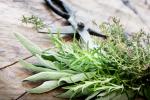Pachira aquatica does not contain any toxins
Toxins were not found in the plant, also known as the lucky chestnut. On the contrary: leaves and fruits can even be eaten. The fruits are used in the country of origin as a substitute for cocoa beans.
also read
- Tips for caring for Pachira aquatica (lucky chestnut)
- Can Pachira aquatica be grown as a bonsai?
- The right location for the lucky chestnut
It is different with the trunks of the ornamental tree. It is occasionally warned that the trunk of Pachira aquatica contains vegetable juices which, in large quantities, can trigger mild symptoms of poisoning. In order to suffer serious damage, a child would have to suck the trunks of several lucky chestnuts.
As long as your children are still very young, you should therefore refrain from using this plant as a precaution if you are not childproof Location for the lucky chestnut Find.
Leaves and fruits are edible
The young leaves of lucky chestnuts can be cooked or eaten raw.
The seeds of the plant, which, however, hardly develop in the cultivation of Pachira aquatica in the room, are also edible. The seeds are released from the fruits that ripen throughout the year and are used like nuts. The taste is similar to that of the peanut.
The bark and unripe fruits are used in Guatemala as a remedy for liver problems.
Tips
If you Cats you don't need to worry about the toxicity of Pachira aquatica. Rather, the animals pose a threat to the indoor tree. Therefore, it is better to keep your cat away from this houseplant.



